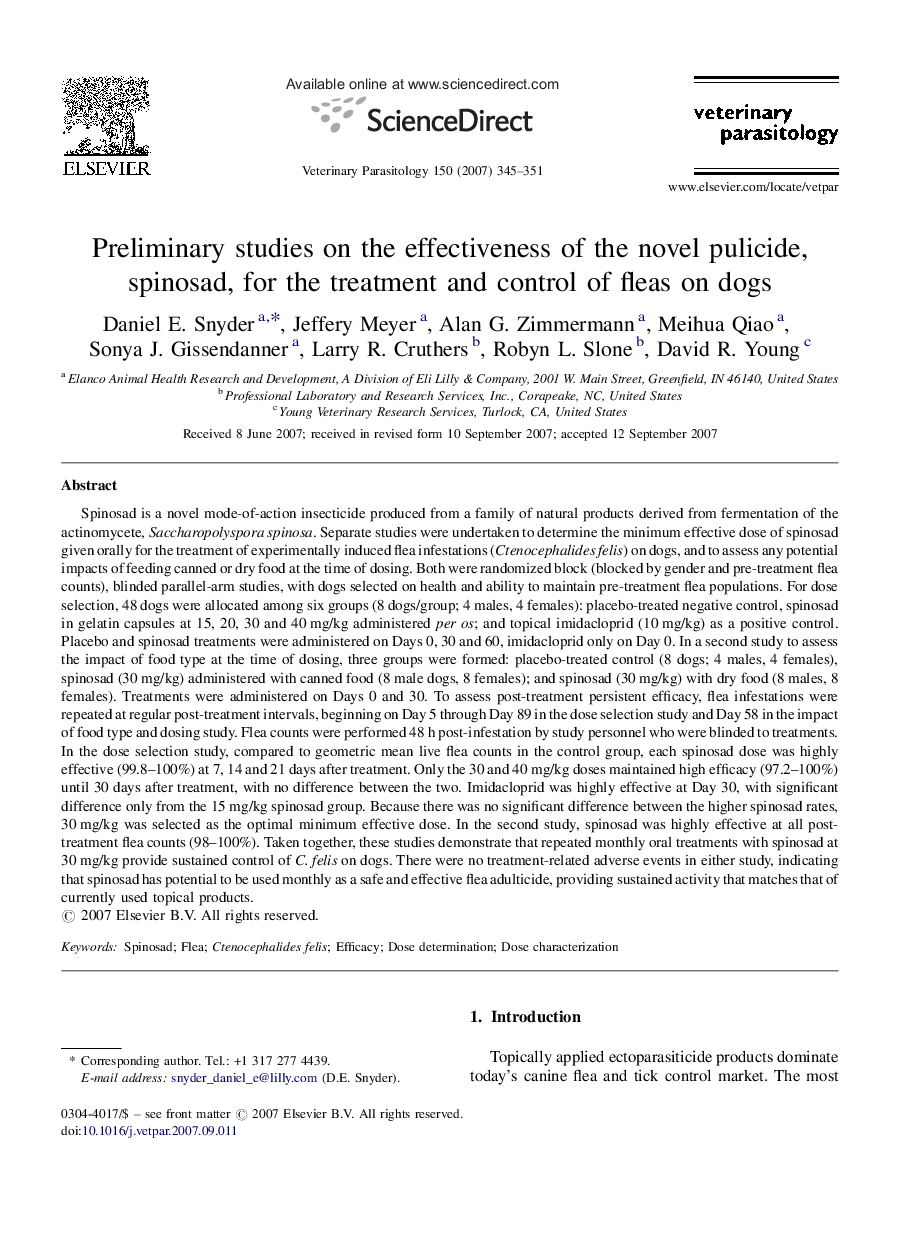| Article ID | Journal | Published Year | Pages | File Type |
|---|---|---|---|---|
| 2471741 | Veterinary Parasitology | 2007 | 7 Pages |
Spinosad is a novel mode-of-action insecticide produced from a family of natural products derived from fermentation of the actinomycete, Saccharopolyspora spinosa. Separate studies were undertaken to determine the minimum effective dose of spinosad given orally for the treatment of experimentally induced flea infestations (Ctenocephalides felis) on dogs, and to assess any potential impacts of feeding canned or dry food at the time of dosing. Both were randomized block (blocked by gender and pre-treatment flea counts), blinded parallel-arm studies, with dogs selected on health and ability to maintain pre-treatment flea populations. For dose selection, 48 dogs were allocated among six groups (8 dogs/group; 4 males, 4 females): placebo-treated negative control, spinosad in gelatin capsules at 15, 20, 30 and 40 mg/kg administered per os; and topical imidacloprid (10 mg/kg) as a positive control. Placebo and spinosad treatments were administered on Days 0, 30 and 60, imidacloprid only on Day 0. In a second study to assess the impact of food type at the time of dosing, three groups were formed: placebo-treated control (8 dogs; 4 males, 4 females), spinosad (30 mg/kg) administered with canned food (8 male dogs, 8 females); and spinosad (30 mg/kg) with dry food (8 males, 8 females). Treatments were administered on Days 0 and 30. To assess post-treatment persistent efficacy, flea infestations were repeated at regular post-treatment intervals, beginning on Day 5 through Day 89 in the dose selection study and Day 58 in the impact of food type and dosing study. Flea counts were performed 48 h post-infestation by study personnel who were blinded to treatments. In the dose selection study, compared to geometric mean live flea counts in the control group, each spinosad dose was highly effective (99.8–100%) at 7, 14 and 21 days after treatment. Only the 30 and 40 mg/kg doses maintained high efficacy (97.2–100%) until 30 days after treatment, with no difference between the two. Imidacloprid was highly effective at Day 30, with significant difference only from the 15 mg/kg spinosad group. Because there was no significant difference between the higher spinosad rates, 30 mg/kg was selected as the optimal minimum effective dose. In the second study, spinosad was highly effective at all post-treatment flea counts (98–100%). Taken together, these studies demonstrate that repeated monthly oral treatments with spinosad at 30 mg/kg provide sustained control of C. felis on dogs. There were no treatment-related adverse events in either study, indicating that spinosad has potential to be used monthly as a safe and effective flea adulticide, providing sustained activity that matches that of currently used topical products.
